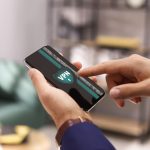
The right USB cable for your device is the one that came with it. If you need a new one, make sure to get the same type of connector that your device uses. For example, if your device has a micro-USB port, you’ll need a micro-USB cable.
If you’re not sure what type of USB connector your device has, check the manual or look for a symbol on the port.
How to identify a fast charger
When you’re looking for a fast charger, there are a few things to keep in mind. First, check the output voltage and current. A good quality charger will have an output of 5 volts and at least 2 amps.Next, look for a charger that’s rated for quick charging. Quick chargers can charge your device up to 75% faster than a standard charger.Finally, make sure the charging cable is the right type for your device. Some fast chargers come with a special cable that’s designed for quick charging.
What are some tips for using USB cables safely and effectively
- Always check the voltage and current rating of a USB charger before using it. A charger with too high of an output can damage your device.
- If you’re not sure what type of USB connector your device has, check the manual or look for a symbol on the port.
- When you’re looking for a fast charger, make sure to check the output voltage and current, as well as the charger’s quick charge rating.
- Always use the USB cable that came with your device, or a replacement cable that’s the same type. Using the wrong type of cable can damage your device.
- Be careful not to bend or kink a USB cable, as this can damage the wires inside.
- Never use a USB cable with frayed or damaged insulation. If the insulation is damaged, the wires inside could be exposed and cause an electrical short.
How can you store or transport USB cables safely and easily
To avoid tangles, wind the cable around your hand or a piece of cardboard.You can also use a zip ties or Velcro strips to keep cables tidy and organized.When packing cables for travel, make sure to label them so you know which one goes with which device.Never leave a USB cable plugged into a device for extended periods of time, as this can wear out the connector.When not in use, store USB cables in a dry, cool place out of direct sunlight.
Are there any other ways to use USB cables beyond charging and connecting devices
Yes, there are a few other ways to use USB cables. You can use them to transfer data between devices, or you can use them to connect devices to external monitors or TVs. You can also use USB cables to charge some types of batteries.
- Some newer laptops and computers have USB ports that can be used to charge devices.
- You can also use a USB cable to transfer data between two devices, such as transferring photos from a camera to a computer.
- Some devices, such as digital cameras, can also be charged via a USB port on a TV or other type of display.
- Finally, you can use a USB cable to connect certain types of printers to a computer.





